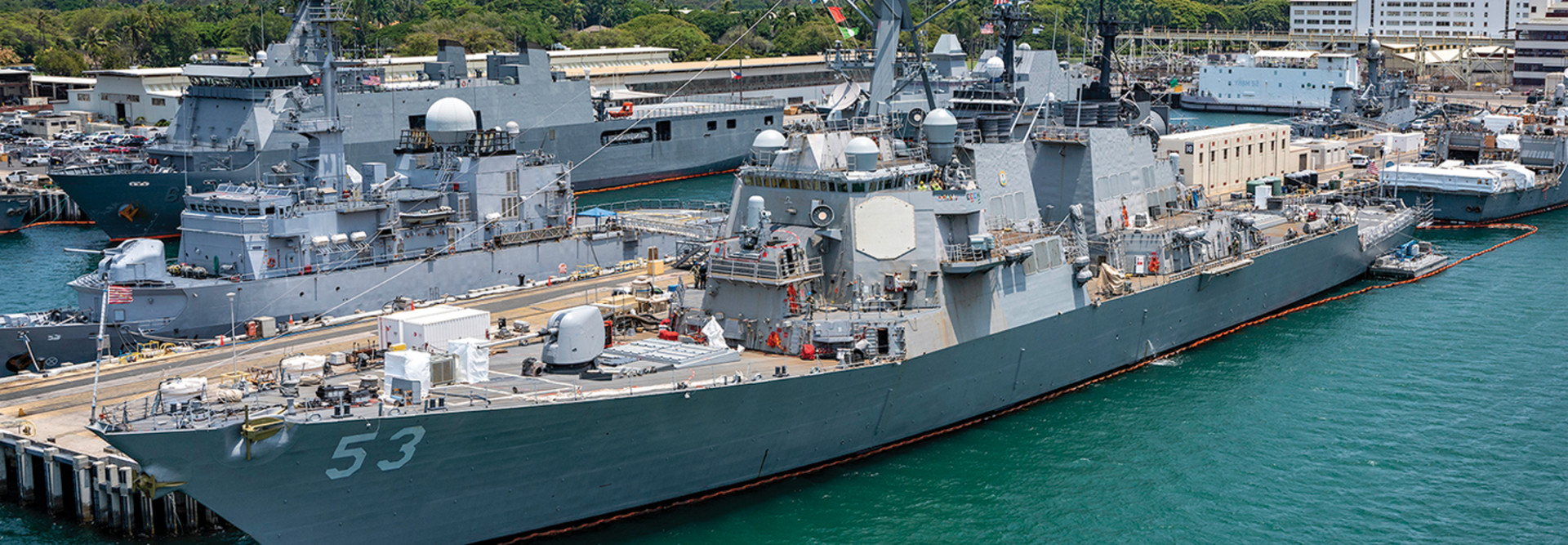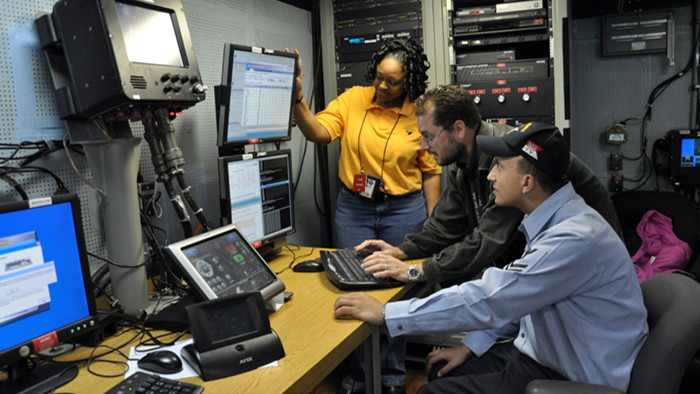Fran White, left, a civil service employee at Space and Naval Warfare Systems Command, Systems Center Atlantic, and Clayton Bush, a Tactical Networks contractor, work with Petty Officer 2nd Class James Rago to troubleshoot the video teleconference system of a video information exchange system aboard the aircraft carrier USS Ronald Reagan. U.S. Navy photo by Rick Naystatt
Alan Jaeger, the applications manager of the Naval Surface Warfare Center’s Office of Research and Technology, says in a statement that the Navy’s ability as in-service engineers to support the fleet “currently requires extensive on-site personnel in order to identify configuration, damage, corrosion and other mechanical issues,”
“The concept of a ‘digital twin’ or as-built models of surface ships provides extensive opportunities to better serve the fleet,” he says. “Imagine being able to not only collect valuable information without placing maintenance personnel in potentially hazardous situations, but to also do it with the ship underway while obtaining better and more accurate data in the process.”
MORE FROM FEDTECH: Find out how federal IT leaders can adapt to accelerating technological change.
Digital Twin Tools Can Speed Delivery of Innovations
Meanwhile, the Navy has started to use digital twins to test IT systems that can be used on ships, starting with the ships in the USS Theodore Roosevelt strike group, according to Federal News Network.
Developers will be able to use them to build and pilot new technologies and applications and get them deployed to ships faster without compromising critical systems onboard physical ships.
“We can catch all the problems before they ever hit a piece of hardware,” Robert Parker, the technical director in the Navy’s program executive office for command, control, communications, computers and intelligence, tells Federal News Network. “We’re trying to push testing and development as far to the left as possible. We want to build a model from day one that encapsulates all the interfaces, all the data exchanges, all the messages. So, before you write a single line of code, you can check to see if you have the applications laid out correctly.”
The Navy foresees its digital twins operating in a commercial cloud environment, dramatically expanding the number of users who could develop software for Navy systems.
“One of the benefits of cloud is the ease of access — it’s ubiquitous,” Delores Washburn, the chief engineer at Naval Information Warfare Center Pacific, tells Federal News Network. “We’ve been able to architect it in a secure way where we can let our contractors, the performers, and even the government workforce, all have access to the same development environment. We have folks all across the United States accessing it to do development now.”
However, that vision is still not a practical reality for the Navy. Historically, Navy applications were developed in siloes and were not interoperable with others. That is starting to change as the Navy is moving toward containerization of apps, according to Federal News Network. By leveraging a Platform as a Service cloud model, the digital twin can access the same IT environment operating on the strike group’s vessels.
“When we go have a big ship maintenance availability and we do our software installs, we’re not done,” Washburn says. “If there’s some new game-changing technology, we can now push that update out there to the ships in the strike group just as seamlessly as you would on your smartphone, because those building blocks are all there.”












